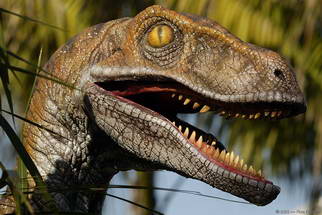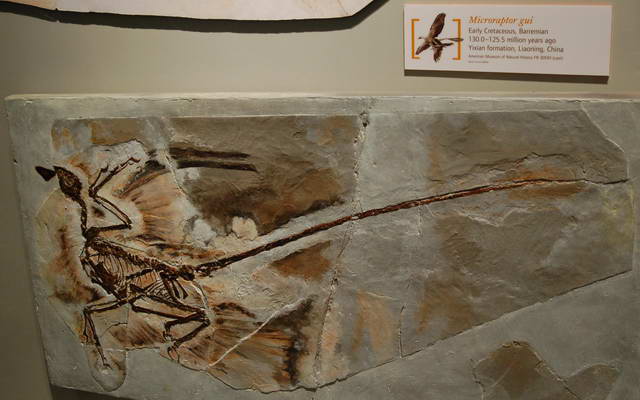|
|
Blogroll
|
|
Most recent articles |
|
Highlights |
|
States and Economies |
|
World economies: 15 of 50 largest economies are U.S. States: |
|
World States – Table 1 |
|
History and Society |
|
Fourth of July aboard the W.W. II aircraft carrier the U.S.S. Hornet |
|
A. L. Kroeber's The Civilization of California's Far Northwest |
|
The Arab Admiralty – and an Arab naval view of the Crusades |
|
Excerpt from “The Wife of Bath's Prologue” by Geoffrey Chaucer |
|
“Horsey” Vikings: exploring origin of the “Rohirrim” in The Lord of the Rings
|
|
The Battle of Crécy by Winston S. Churchill |
|
Monotheistic Paganism, or just what was it Christianity fought and faced? |
|
Medieval constipation advice for travelers: “A ripe turd is an unbearable burden” |
|
Alexis de Tocqueville's bicentennial: Anticipatory censorship in colonial America |
|
Antiquity vs. Modernity: Alexis de Tocqueville on the mind of the slaveholder vs. soul of America |
|
Federalism, and Alexis de Tocqueville on the origins of American democracy |
|
Science, Technology, Space |
|
Looking in the right direction – towards the future – with regard to global warming |
|
Know Your Neighborhood: from Andromeda to Fermions and Bosons |
|
Magnetars and Pulsars: Science's special section on pulsars |
|
The Geneva-Copenhagen Survey of Sun-like Stars in the Milky Way |
|
Galactic Central: the Black Hole at the Center of the Galaxy |
|
Politics and War |
|
America’s strong arm, wielding the Sword of Iraq, slays the multi-headed Hydra of Al Qaeda |
|
Regional and Personal |
|
Tamara Lynn Scott |
What wailing wight
Calls the watchman of the night?
William Blake
Whirl is king
Aristophanes
“Jumping into hyperspace ain't like dustin' crops, boy.”
Han Solo, another galaxy
|
Blogroll |
|
Grand Central Station |
|
Legal and Economic |
|
History and Society |
|
Science, Technology, Space |
|
Politics and War |
|
Eclectic |
|
Regional |
|
Reciprocal |
© Copyright 2002 – 2009
Michael Edward McNeil
Impearls: 2007-06-17 Archive
Earthdate 2007-06-18
| No mere Bipeds, but Biplanes! |
|
Glenn Reynolds the Instapundit recently pointed to an MSNBC news report detailing the $25 million “Creation Museum” that has commenced operations near Petersburg in rural Kentucky, just across the Ohio from Cincinnati; in which it is presented with an apparently straight face that dinosaurs and humans once lived simultaneously and cozily with each other, but the former apparently had bad PR with God and got wiped out in the (mythical) Flood — no Ark for them — despite it being humans that ate the apple! (Yes, I know I’m mixing up two distinct mythological tales, but that doesn’t change the point: it wasn’t dinosaurs that committed the evil deeds that supposedly led God to despair and decide to wipe out his chosen species — Man.)
It’s amusing reading of the psychic antics of Creationists — fondly imagining that humans ever contemporaneously interacted with dinosaurs — while exhibiting so little comprehension of the concept and phenomenon of the “geologic column,” which concretely reveals that the two kinds (and so much else) were kept absolutely, totally, and universally distinct from one another. (The scientific explanation for that observable absolute separation is that vast gulfs of time kept them apart — resulting in humans’ and dinosaurs’ (et al.) respective remains appearing in totally different geological strata — but, of course, “Young Earth” Creationists reject a priori the existence of great gulfs of time: to them the Earth, indeed the entire cosmic universe, is and must be no more than about 6,000 years old.)
Creationists struggle to keep their image of dinosaurs up to date in the latest scaly form — unfortunately for them, as we shall see, the dinosaurs as they are portrayed in their spanking new Creation Museum are already obsolete — whilst everything, in their view, dinosaurs and all the rest, must be somehow shoehorned to fit into a straightjacket frame that was fixed onto stone tablets by wandering desert tribesfolk some three millennia ago.
 Meanwhile, science keeps marching on.
During the brief decade and a half since our mental image of Velociraptors (as well as Tyrannosaurus) was illuminated and vividly fixed in our minds by Steven Spielberg’s dramatic film Jurassic Park, the general scientific picture of these and related clans of dinosaurs has been revolutionized and transformed away from that sharp image.
Meanwhile, science keeps marching on.
During the brief decade and a half since our mental image of Velociraptors (as well as Tyrannosaurus) was illuminated and vividly fixed in our minds by Steven Spielberg’s dramatic film Jurassic Park, the general scientific picture of these and related clans of dinosaurs has been revolutionized and transformed away from that sharp image.
Not that those carnivorous dinosaurs weren’t active and vigorous, mind you, as well as very likely warm-blooded. I’ve been following this issue ever since an article in the journal Science during the late 1990’s reported discovery of a series of extremely well-preserved dinosaur fossils from Liaoning province in northeastern China, carrying such exquisite detail as a result of fine volcanic ash deposits that clear impressions of the mantling of feathers are readily apparent. These fossil dinosaurs turn out to be close relatives and ancestors of Velociraptors and Tyrannosaurus and other (saurischian) theropod dinosaurs, as well as being relatives (“cousins”) to the true birds we know and love today.
Just as in human evolution we’ve learned that the original, simplest, Ockham’s razor-like hypothesis, though seemingly plausible — that the rise to bipedal stance was connected with the freeing up of the hands for the use of tools, and thus higher human intelligence — turned out in fact to be too simple. We now know that “Lucy” and the other Australopithecines walked erect whilst in possession of brains no bigger than those of chimpanzees — thus the evolution of bipedalism had to be both earlier and independent of toolmaking and the rise of higher-than-animal intelligence. Similarly, in dinosaur-bird evolution it had been simplistically assumed that the evolution of feathers was directly connected with that of flight as well as of birds themselves. The light but strong aerodynamic shapes and surfaces presented by flight-feathers in living birds today made that assumption seem somewhat natural.
 Now we’ve discovered that those two things — feathers and flight — also arose independently and disjointedly in time. *
It appears, indeed, that feathers initially possessed no flight functionality at all, but were adapted by certain lines of theropod dinosaurs for insulation purposes — indicating thereby that they likely were, as has been hypothesized, warm blooded.
As a result, some families of dinosaurs, contrary to their conventionally presented (e.g., Jurassic Park) scaly appearance, probably evoked a certain (albeit pointy-toothed and slashing-clawed) “Big Bird” aspect, covered with downy feathers (whether yellow or not) like a bird chick as they likely were.
Now we’ve discovered that those two things — feathers and flight — also arose independently and disjointedly in time. *
It appears, indeed, that feathers initially possessed no flight functionality at all, but were adapted by certain lines of theropod dinosaurs for insulation purposes — indicating thereby that they likely were, as has been hypothesized, warm blooded.
As a result, some families of dinosaurs, contrary to their conventionally presented (e.g., Jurassic Park) scaly appearance, probably evoked a certain (albeit pointy-toothed and slashing-clawed) “Big Bird” aspect, covered with downy feathers (whether yellow or not) like a bird chick as they likely were.
(*This principle, that different parts and organs of evolving organisms may evolve at differing rates or sequentially, rather than steadily, all together over time — a phenomenon known as “mosaic evolution” — seems obvious to me, but appears surprising to some otherwise esteemed evolutionary theorists.)
Beyond that, in certain theropod dinosaur lineages descendant from those initially inventing them, feathers evolved beyond mere insulating down into “pennaceous feathers” (i.e., feathers having a “central shaft with vanes branching off to either side,” as Wikipedia describes them). Recent data indicates that Velociraptors, though obviously flightless, likely possessed such pennaceous feathers — whose evolution, like that of downy feathers, also apparently occurred for reasons independent of flight. (Whatever those reasons were would seem to be unknown at present.)
Furthermore, it now appears that flight itself initially evolved
before, and thus independently of, birds.
Fossil evidence from several lines of dinosaurs — near relatives of birds but apparently outside the lines leading to true birds and the direct ancestors thereto — shows that all kinds of living experiments were being conducted, involving some experimental “craft” that were not only gliders but likely also flew, perhaps as well as the famous Archaeopteryx (thought to be close to the line leading to birds).
Take a close look at this image (from Wikipedia):
Look at it — and then look again. You’re not going cross-eyed; the picture reveals a small theropod dinosaur called Microraptor (see the Wikipedia article of that name), a type of Dromaeosaur (as was Velociraptor), which had wings (flight feathers extending out on either side) on its feet, as well as more conventional wings on its arms. In other words, Microraptor was not a biped (or not just a biped), but a biplane!
It’s extremely interesting that the advent of flight in animals — at least the form leading to flight in birds, via theropod dinosaurs (obviously pterosaurs, as a line of reptiles distant from dinosaurs, and bats as mammals, may well have followed different technological pathways) — should have paralleled the trajectory which for us led to human flight: Both technological evolutionary advances involved experimenting with varieties of “airplane” utilizing two parallel rows (planes) of wings, one above the other — after which (or as an alternative approach to which) in the line leading to true birds the overall design was revamped and streamlined by abandoning the lower bank of wings in lieu of a simplified set of landing gear (doubling as weapons: talons on raptor birds). Teeth were ultimately eliminated in lieu of the (lighter) beak, claws on the (front) wings were also discarded — while, once again, these events occurred sequentially one after another and at a discontinuous rate through time.
Note that Microraptor is a very, very close, though diminutive, relative of Velociraptor. Take a look at the relationship tree connecting the two genera (which you can review in the Wikipedia article on “Feathered Dinosaurs”) for insights into how closely related they really were.
As paleontologist Mark Norell of the American Museum of Natural History (AMNH) in New York City, put it (in an article in Science, the one first cuing me in on this subject, the better part of a decade ago): 1 “We have as much evidence that Velociraptors had feathers as we do that Neandertals had hair”!
That impression has only greatly strengthened over the intervening years as more and more new, dramatically feathered dinosaur fossils have been discovered.
UPDATE: 2007-07-10 17:10 UT: Changed image hosting facility and re-hosted images after former site reported itself as being hacked and didn’t recover after a few days.
UPDATE:
2007-10-31 19:00 UT:
Changed image hosting facility again (to Flikr this time) after next host went down and stayed down for a few days.
1 Tim Appenzeller, “T. rex Was Fierce, Yes, But Feathered, Too,” Science, Vol. 285, Issue 5436 (Earthdate 1999-09-24), pp. 2052-2053; [DOI: 10.1126/science.285.5436.2052].
Labels: birds, creationism, dinosaurs, evolution
| (Blank last screen) |
|
2002-11-03 2002-11-10 2002-11-17 2002-11-24 2002-12-01 2002-12-08 2002-12-15 2002-12-22 2002-12-29 2003-01-05 2003-01-12 2003-01-19 2003-01-26 2003-02-02 2003-02-16 2003-04-20 2003-04-27 2003-05-04 2003-05-11 2003-06-01 2003-06-15 2003-06-22 2003-06-29 2003-07-13 2003-07-20 2003-08-03 2003-08-10 2003-08-24 2003-08-31 2003-09-07 2003-09-28 2003-10-05 2003-10-26 2003-11-02 2003-11-16 2003-11-23 2003-11-30 2003-12-07 2003-12-14 2003-12-21 2003-12-28 2004-01-04 2004-01-11 2004-01-25 2004-02-01 2004-02-08 2004-02-29 2004-03-07 2004-03-14 2004-03-21 2004-03-28 2004-04-04 2004-04-11 2004-04-18 2004-04-25 2004-05-02 2004-05-16 2004-05-23 2004-05-30 2004-06-06 2004-06-13 2004-06-20 2004-07-11 2004-07-18 2004-07-25 2004-08-22 2004-09-05 2004-10-10 2005-06-12 2005-06-19 2005-06-26 2005-07-03 2005-07-10 2005-07-24 2005-08-07 2005-08-21 2005-08-28 2005-09-04 2005-09-11 2005-09-18 2005-10-02 2005-10-09 2005-10-16 2005-10-30 2005-11-06 2005-11-27 2006-04-02 2006-04-09 2006-07-02 2006-07-23 2006-07-30 2007-01-21 2007-02-04 2007-04-22 2007-05-13 2007-06-17 2007-09-09 2007-09-16 2007-09-23 2007-10-07 2007-10-21 2007-11-04 2009-06-28 2009-07-19 2009-08-23 2009-09-06 2009-09-20 2009-12-13 2011-03-27 2012-01-01 2012-02-05 2012-02-12


